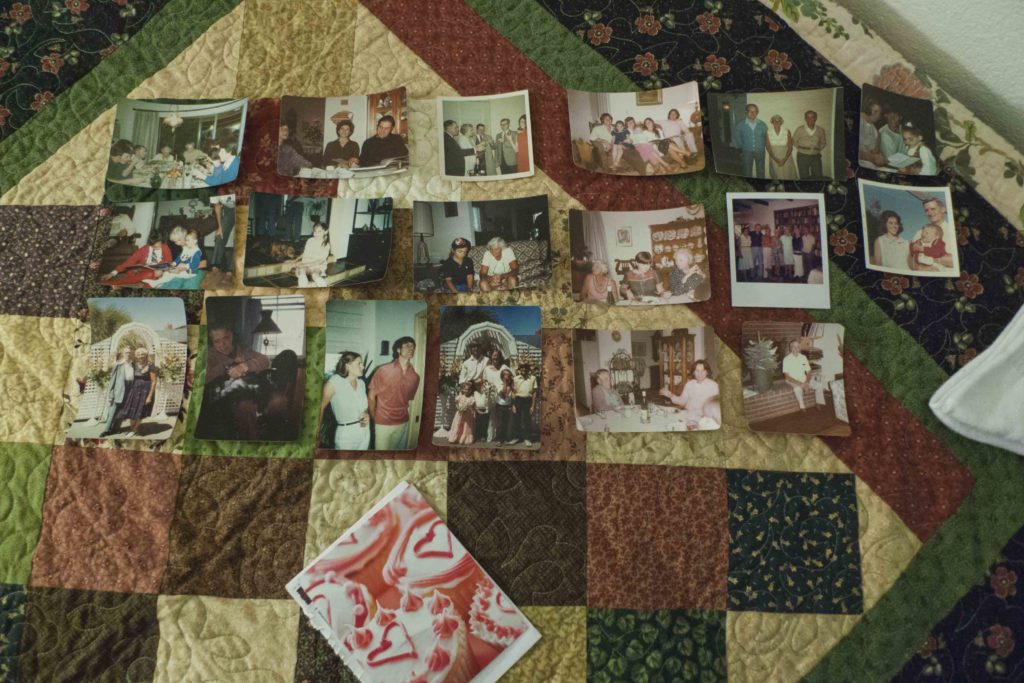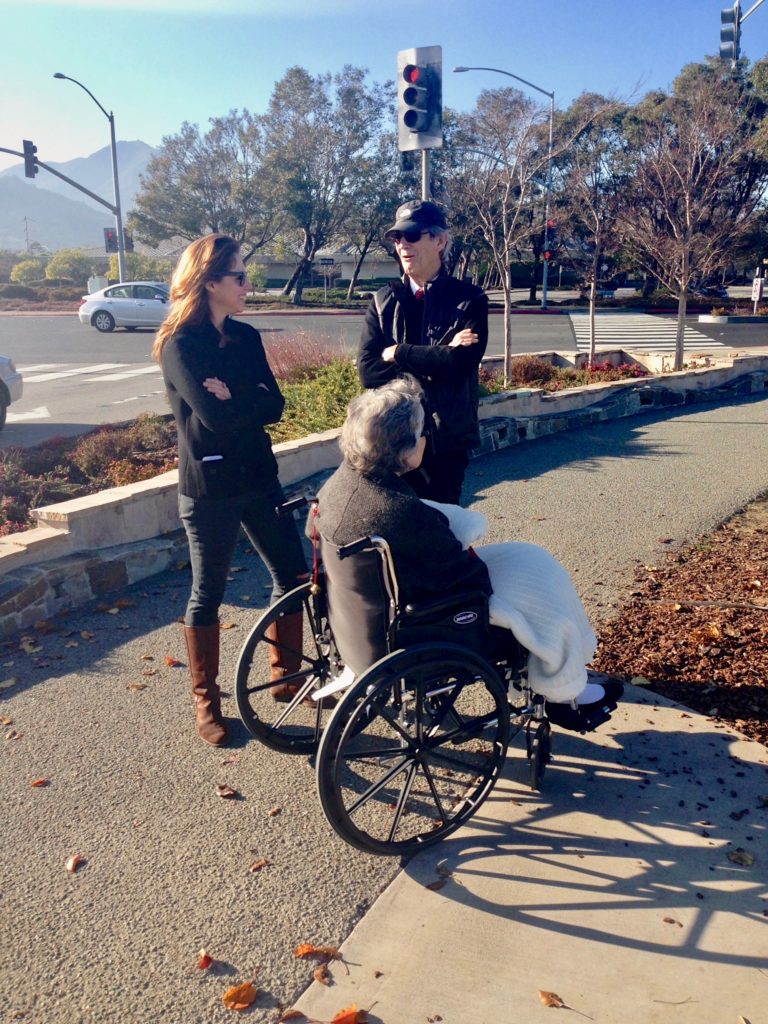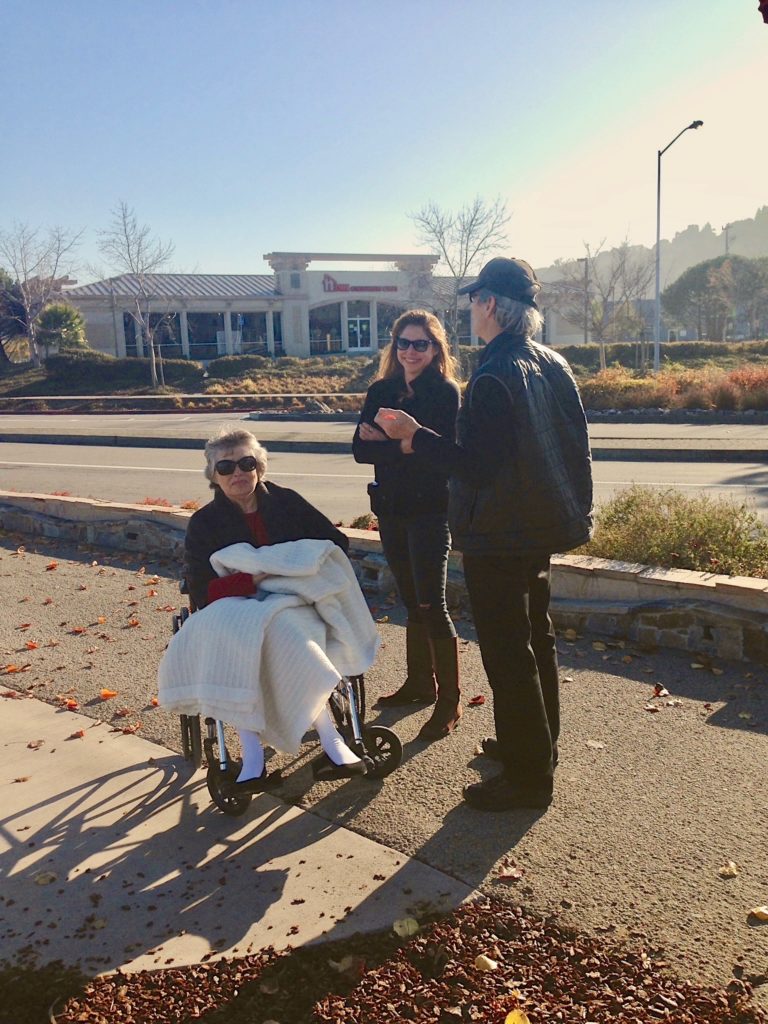None of the photos or observations presented on this website were made with a research or journalism project in mind, or even a professional interest. They emerged instead through the kind of engaged inquiry someone might undertake while trying to help others care for a person living with Alzheimer’s or another form of dementia.
I took photos primarily for myself, to learn more about what I was seeing, and to share with Lisa, Leslie and some of their family members. As I’ve done throughout my adult life, I also wrote notes and accounts of things that I found interesting, provocative or puzzling. I learned in the past year or so that my writing compulsions are consistent with a condition called “hypergraphia.” I’m not sure what that might explain, but I frequently “write to learn,” have done so for years and years, and certainly did a fair amount of that in connection with visiting Leslie.
The photo on the left was taken on January 20, 2012, during my first visit with Leslie in her memory care home. I brought a small stack of family photos with me that time, and we spent 15 minutes or so looking through them before Leslie started organizing the photos in groups on her bed. When I came 10 days later for a second visit, I found the same photos arranged in relatively neat rows and columns on her bedspread. I took a photo of the arrangement to review later in hopes that it might give me some additional insights into how Leslie was thinking about and experiencing her life subsequent to her Alzheimer’s diagnosis.
Some of my photos and notes were rewarding for me to share with Lisa as appreciations of her mom or to document challenges or accomplishments related to her care. During my visits, I also frequently showed Leslie photographs, either on my phone’s screen or as paper prints. Sometimes those featured prominently in how we spent our time. After a party or event at her care facility, I usually brought Leslie photos and we spent some time looking and “talking” about them. I did something similar–though not as often–for outside events in which Lisa or I had participated: the weddings of Leslie’s niece and of my daughter and my son, for example, or a protest march.
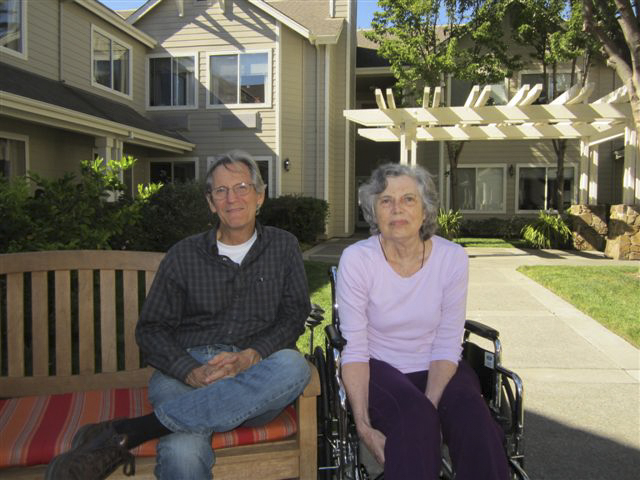
Leslie and me during one of my early visits with her at her memory care residence. For most of these visits, I saw Leslie by myself, but once or twice that first year, Lisa and I happened to be there at the same time. Most of my communication with Lisa during the first two years of visiting was by email or text. We weren’t thinking of this at the time, but our texts and emails did record some of the questions we had about Leslie’s well being, about Alzheimer’s in general, and about our experiences in trying to communicate and stay engaged with Leslie.
Photographs, texts and face-to-face meetings reflected and supported both my friendship and my consultations with Lisa, and she shared in return her deliberations about her mom. After Lisa decided to move Leslie from her first memory care home, we both visited some possible second homes and compared notes. When Leslie could no longer walk safely, even with a walker and care giver assisting, Lisa retained a physical therapist to demonstrate exercises we could do with Leslie to help maintain her muscle tone and flexibility. When Lisa received a surprising neurological diagnosis from an ER doctor (she’d taken Leslie there after a fall), we both scoured the web and compared notes about what it could mean for Leslie’s care.
As Leslie’s legal guardian, Lisa was constantly engaged in numerous other deliberations and inquiries about her mom’s care. These ranged from medical diagnostics and treatments, recommended diet and activities, health insurance and residence policies, to strategies for communicating with other family members, scheduling visits, visiting schedules and so on. Lisa also helped caregivers and residence administrators set realistic and desirable expectations for Leslie’s behavior—e.g. feeding herself or being fed; trying to walk or not; handling materials; the time she spent in bed or a wheelchair; interacting with other residents, family members, specific care givers; and so on. From time to time Lisa also organized and hosted social opportunities for family and friends at Leslie’s memory care residence.

December 25th, 2012. Christmas dinner in the dining hall of Leslie’s first memory care residence. From left to right, my wife Lynne, Leslie, Lisa, me and Lynne’s mother Joan.
Opportunities to talk with Lisa as she thought such things through were invaluable to what I learned about caring for Leslie and others living with Alzheimer’s or dementia. So were opportunities to be with Lisa and Leslie together. Seeing how much fun the two of them had with each other inspired me to engage more deeply with Leslie than I might have otherwise. The two of them also formed the crucible in which Lisa became a dear friend for me, and I renewed the friendship Leslie and I had enjoyed since childhood.
Chatting with Leslie and Lisa after Christmas dinner at Leslie’s memory care residence.
By the time I came around to the idea of sharing with others some of what I was learning from Leslie and Lisa, my friendship with both of them meant too much for me to push ahead on my own without first exploring their preferences and concerns. In practice, that meant limiting any reporting out to what they were comfortable having me share, as a good friend of theirs, with specific people or with the general public.
My first step towards a public report came roughly five years after I’d started visiting Leslie in her memory care home. I’d been struck by the range of visual cues Lisa and I used to infer what Leslie might be thinking or feeling. I thought a detailed description of those cues might be interesting to some of my colleagues in the International Visual Sociology Association (IVSA). When I broached with Lisa the idea of preparing a paper for that purpose she was very encouraging. When she asked what it might involve for her, I said, ideally, I’d like to prepare something jointly and share the presentation as well. Lisa said she had no interest in taking something like that on, but suggested I move ahead on my own, with her blessing.
Lisa and I had several more conversations about potential conference papers or an Alzheimer’s blog before I actually prepared a conference proposal. Some conversations were relatively focused, but others bounced all over the place. When I asked Lisa for guidance about a paper I was thinking about writing on the subject of “visual literacy and Alzheimer’s” (for the IVSA), she was positive and curious. “So, just WHAT is this visual literacy stuff?” she asked. I answered with a cluster of half-baked examples and metaphors that we then spent some time taking apart. Leslie couldn’t ask as directly as Lisa, but when I mentioned the same terms to her, she gave me a quizzical look, in response to which I also tried to explain to her what I had in mind.

When I promised Lisa early on that I wouldn’t show any photos of her mom in public presentations or on a public website, she was incredulous. “Why would you even THINK of not showing the photos!” she said. “There’s no way people will get it without photos, is there?” I said I wasn’t sure about that, but she persisted: “The photos are just so vivid. And endearing. You’ve GOT to include the photos!”
At a later date, after I’d agreed to include a few photos for a conference presentation, she called me out again. “Don’t you want to change how people think? And wouldn’t leaving the photos out be just kind of a waste of everyone’s time?”
Point taken, I said, but what about your mom? Lisa shook her head slowly side to side. “In the place my mom is in now,” she said, “whatever you do at a conference like that is not going to impinge on her one bit. But if you get the word out, maybe more people will get it that my mom and other people with Alzheimer’s actually have lives!”
Lisa won me over and here we are. She didn’t ask for this, but I showed all the photos I’d made to her and to Leslie before presenting them anywhere. I also gave Lisa review copies of whatever I was writing about Alzheimer’s and asked her to identify anything I should delete. I thought that was the right thing to do, but anything that approached a formal “review and comment” exchange with Lisa felt weaker by far (and less credible) than the kind of candid, discursive back and forth she and I were accustomed to.
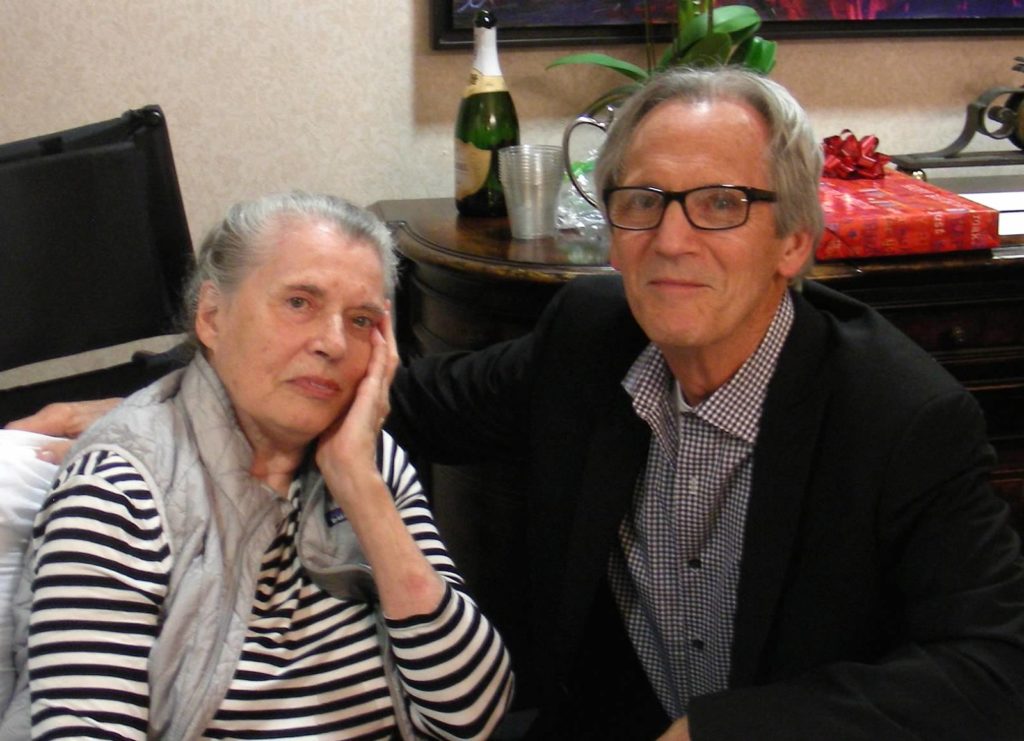
Closer to the mark for me, I think, has been my desire to avoid violating Lisa’s sensibilities and trust and those of her mom. I’m confident, but not necessarily from anything she and I said about this directly, that Lisa knows I’ve consistently tried to do that. I think Leslie felt that too, but I’m not as sure, and because of her language loss, I never could be. On the other hand, as Leslie’s voice was limited to what we could see and infer from what she did, when push came to shove, I chose to help her speak.
[There’s more about “seeing” Leslie’s “voice” in the post called, Seeing a Person Think.]


